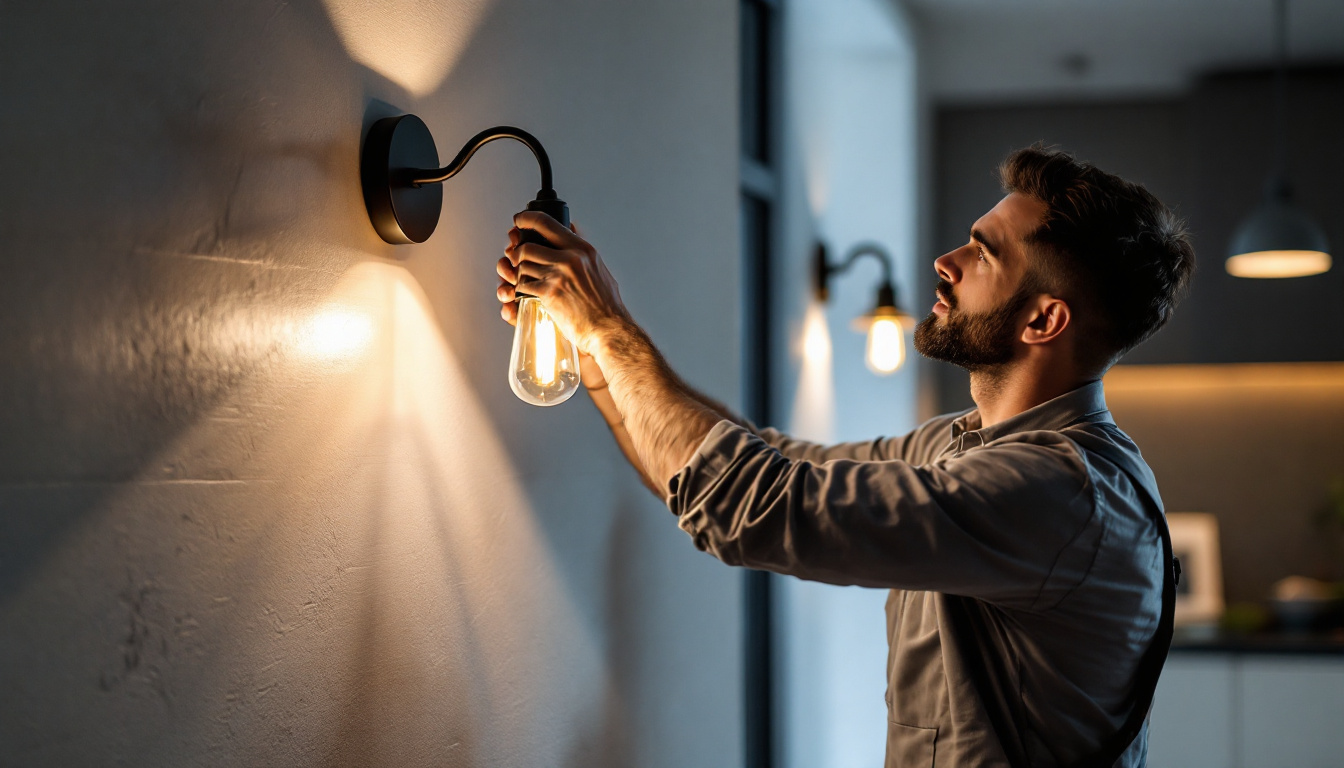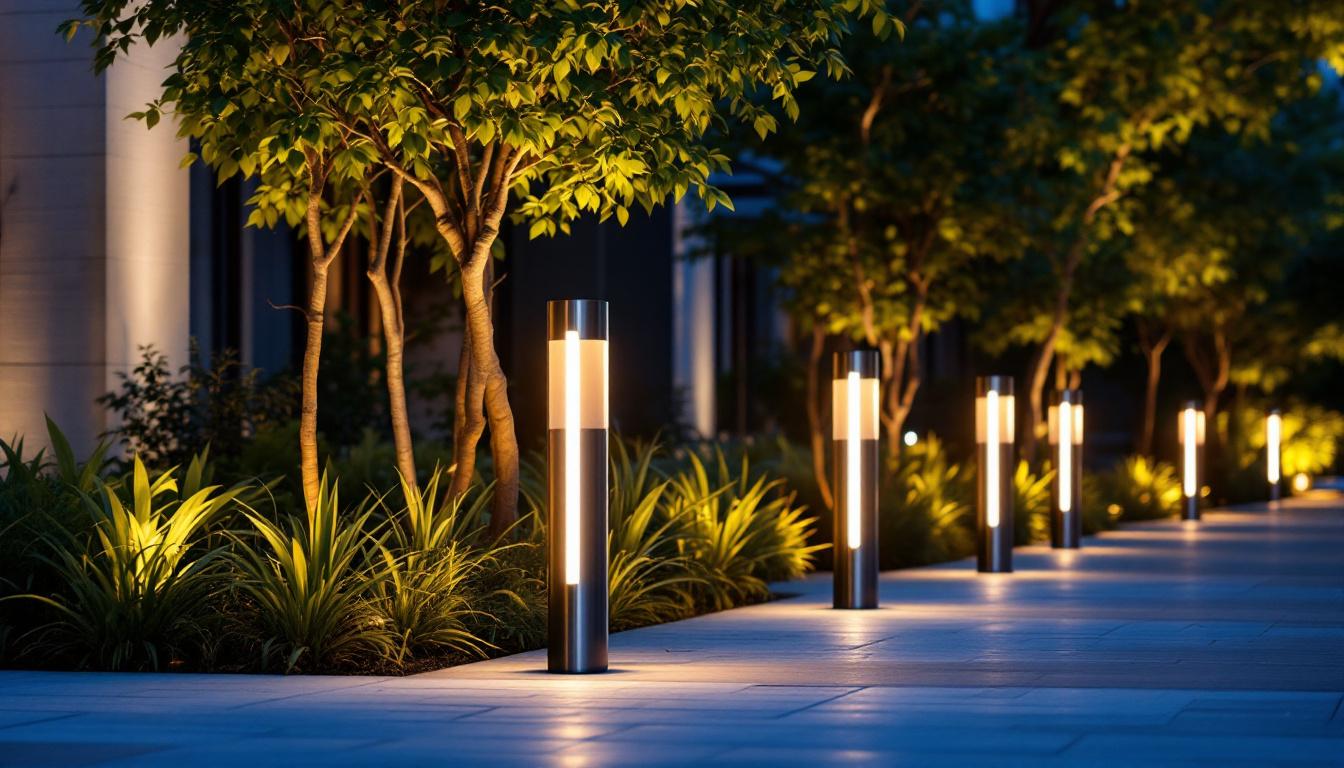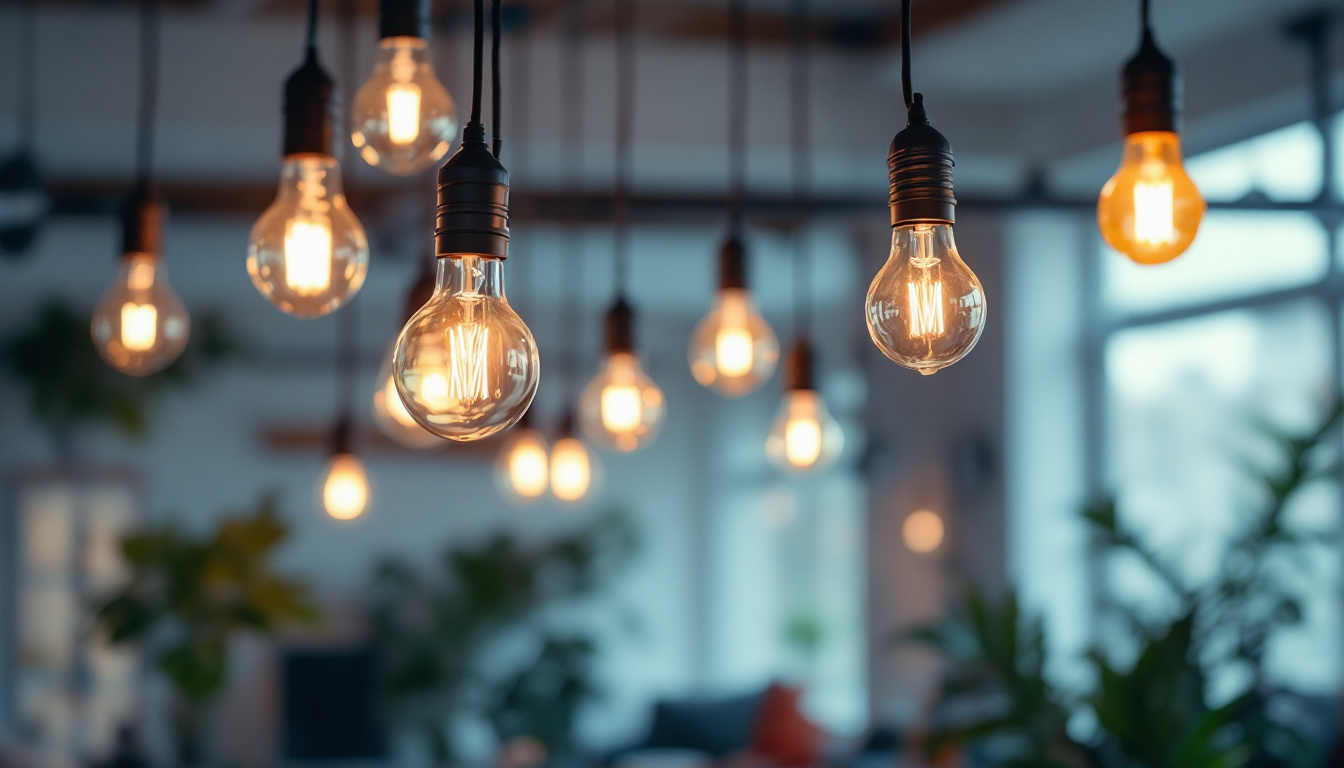
In the ever-evolving world of lighting design and installation, efficiency is paramount for contractors looking to enhance their operations. One of the most effective ways to achieve this is through the strategic use of light sconces. These fixtures not only provide aesthetic appeal but also serve practical purposes that can streamline the workflow of lighting contractors. This article delves into the various aspects of light sconces, exploring their benefits, applications, and tips for maximizing efficiency in projects.
Light sconces are wall-mounted light fixtures that can serve a multitude of functions in both residential and commercial settings. They come in various styles, sizes, and designs, making them versatile options for different lighting needs. While their primary purpose is to illuminate spaces, they can also enhance the overall ambiance and aesthetics of a room.
There are several types of light sconces available, each designed to fulfill specific lighting requirements. Some common types include:
Understanding the different types of sconces available allows lighting contractors to make informed decisions that align with their clients’ needs. Additionally, the strategic placement of these sconces can significantly affect the functionality and mood of a room. For example, placing ambient sconces at eye level can create a warm and inviting atmosphere, while positioning accent sconces to spotlight a piece of art can draw attention and create a focal point within the space.
Light sconces are available in a variety of materials, including metal, glass, and wood. Each material offers distinct advantages in terms of durability, maintenance, and aesthetic appeal. For instance, metal sconces often provide a modern look and are highly durable, while glass sconces can add a touch of elegance and sophistication.
Furthermore, sconces come in numerous styles, ranging from contemporary to traditional. This variety enables contractors to select fixtures that complement the overall design scheme of a space, ensuring a cohesive look. For example, rustic wooden sconces can enhance a cozy cabin feel, while sleek, chrome designs may suit a minimalist urban loft. Beyond aesthetics, the choice of material and style can also influence the type of light bulb used, affecting energy efficiency and brightness levels.
Moreover, with the rise of smart home technology, many modern sconces now incorporate features such as dimming capabilities and color-changing options, allowing users to customize their lighting experience further. This adaptability not only enhances the functionality of the sconces but also allows homeowners to create different moods for various occasions, from intimate dinners to vibrant gatherings. As such, the integration of technology into lighting design is becoming increasingly popular, making sconces not just a source of light, but also a key component in the overall smart home ecosystem.
Incorporating light sconces into lighting designs can yield numerous benefits for contractors. These advantages extend beyond mere aesthetics, impacting efficiency, functionality, and client satisfaction.
One of the most significant benefits of light sconces is their potential for energy efficiency. Many modern sconces are designed to accommodate LED bulbs, which consume significantly less energy than traditional incandescent bulbs. By opting for energy-efficient lighting solutions, contractors can help clients reduce their energy bills and contribute to a more sustainable environment.
Moreover, the strategic placement of sconces can minimize the need for additional lighting fixtures, further enhancing energy savings. By illuminating specific areas rather than flooding a room with light, contractors can create well-lit spaces that are both functional and visually appealing.
In addition to energy savings, many light sconces come with features such as dimmers or smart technology integration, allowing clients to adjust the brightness based on their needs or preferences. This adaptability not only enhances comfort but also promotes energy conservation, as users can lower the light output during times of low activity. As a result, incorporating these advanced features can significantly elevate the overall lighting experience while keeping energy consumption in check.
Light sconces are particularly beneficial in maximizing space utilization. In smaller rooms, floor space can be at a premium, making wall-mounted fixtures an ideal choice. By installing sconces, contractors can free up valuable floor space while still providing adequate lighting.
Additionally, sconces can be used to create visual interest in a room. By strategically placing them at varying heights or in unique arrangements, contractors can draw attention to architectural features or artwork, enhancing the overall design of the space.
Furthermore, sconces can serve multiple purposes beyond mere illumination. For instance, they can be used to highlight pathways, accentuate furniture arrangements, or even provide ambient lighting for cozy gatherings. This versatility allows contractors to tailor lighting solutions to meet the specific needs of their clients, creating environments that are not only functional but also inviting and engaging. By thoughtfully integrating sconces into a design, contractors can transform ordinary spaces into extraordinary experiences, making them more appealing to potential buyers or renters.
The versatility of light sconces allows them to be used in a wide range of applications. Understanding where and how to use them effectively can significantly impact the success of a lighting project.
In residential settings, light sconces can serve various purposes. They are commonly used in hallways, living rooms, and bedrooms to provide ambient lighting. In addition, sconces can be used in bathrooms to create a spa-like atmosphere, providing soft, flattering light around mirrors.
Moreover, sconces can enhance outdoor spaces, illuminating patios, decks, and entryways. By selecting weather-resistant fixtures, contractors can ensure that outdoor sconces withstand the elements while providing safety and aesthetic appeal.
In commercial environments, light sconces can play a crucial role in branding and customer experience. Restaurants, hotels, and retail spaces often utilize sconces to create inviting atmospheres that encourage patrons to linger. The right lighting can influence mood and perception, making it essential for contractors to choose sconces that align with the brand identity.
Additionally, sconces can be used in office settings to enhance productivity. By providing focused task lighting, contractors can help create workspaces that promote efficiency and comfort.
While light sconces offer numerous benefits, proper installation is crucial to maximizing their effectiveness. Contractors must consider various factors to ensure that sconces are installed correctly and safely.
Before installation, contractors should assess the electrical requirements for sconces. This includes determining the appropriate wattage and ensuring that the electrical wiring can support the fixtures. It is essential to follow local building codes and regulations to ensure safety and compliance.
In some cases, it may be necessary to install additional electrical outlets or make modifications to existing wiring. Contractors should be prepared to address these needs to facilitate a smooth installation process.
The placement and height of sconces can significantly impact their effectiveness. Contractors should consider the intended use of the sconces and the overall design of the space when determining their location. For instance, sconces used for task lighting should be positioned at a height that provides adequate illumination without causing glare.
As a general rule, sconces should be installed approximately 60 to 66 inches above the floor, though this may vary depending on the specific application. Contractors should also consider the spacing between sconces to ensure even lighting throughout the area.
To truly harness the potential of light sconces, contractors should adopt strategies that enhance efficiency throughout the lighting design and installation process.
Selecting the right sconces for a project is critical. Contractors should consider factors such as style, size, and functionality when making their selections. By understanding the specific needs of each project, contractors can choose fixtures that not only meet aesthetic requirements but also enhance efficiency.
In addition, it is advisable to stay updated on the latest trends and technologies in lighting design. This knowledge can help contractors make informed decisions about which fixtures to incorporate into their projects, ensuring that they remain competitive in the market.
Effective communication with clients is essential for maximizing efficiency. Contractors should engage clients in discussions about their lighting needs, preferences, and budget constraints. By understanding the client’s vision, contractors can tailor their designs to meet specific requirements, resulting in a more satisfactory outcome.
Furthermore, involving clients in the selection process can lead to better decisions regarding fixture choices and placements. This collaborative approach fosters trust and can lead to repeat business and referrals.
Light sconces are powerful tools for lighting contractors looking to enhance efficiency and improve the quality of their projects. By understanding the various types, benefits, and applications of sconces, contractors can make informed decisions that elevate their work. Proper installation and strategic planning are essential to maximizing the potential of these fixtures.
As the lighting industry continues to evolve, staying informed about the latest trends and technologies will be crucial for contractors aiming to remain competitive. By embracing light sconces as a core component of their lighting designs, contractors can boost efficiency, enhance client satisfaction, and ultimately achieve greater success in their projects.
Ready to elevate your lighting projects with the efficiency and style of light sconces? Look no further than LumenWholesale, where we offer an impressive array of spec-grade lighting solutions at unbeatable wholesale prices. Our commitment to quality and affordability means you can access a wide selection of premium lighting without the extra costs. Plus, with the convenience of free shipping on bulk orders, you can focus on creating stunning spaces with the best value lighting on the market. Don’t compromise on quality or price. Discover wholesale lighting at the best value today and bring your lighting designs to life with LumenWholesale.

Discover how LED bollards can maximize profitability in lighting installations with energy savings up to 70%, enhanced durability, and modern design—boost your projects today!.

Explore the science of LED shop lights and discover how they revolutionize lighting solutions for contractors.

Illuminate your projects with confidence! Discover expert insights and practical tips tailored for lighting contractors in our comprehensive guide to commercial light bulbs.

Discover the pivotal role of the can light bulb in modern lighting installations.